You searched for: 孟加拉国youtube推广【TG飞机:@bapingseo】google霸屏seo推广专业【TG电报:@bapingseo】中國賣家如何在谷歌推廣【Telegram:@bapingseo】北京28可靠网站电竞赛事竞猜平台欢乐谷上能看到2020年美联杯何时开始吗?hV9xnK/v5SjT4.html
<< Previous | Displaying results 151-175 of 226 for "孟加拉国youtube推广【TG飞机:@bapingseo】google霸屏seo推广专业【TG电报:@bapingseo】中國賣家如何在谷歌推廣【Telegram:@bapingseo】北京28可靠网站电竞赛事竞猜平台欢乐谷上能看到2020年美联杯何时开始吗?hV9xnK/v5SjT4.html" | Next >>
-
Gisha Galina Bursztyn
ID CardGisha was raised by Yiddish-speaking, religious Jewish parents in the town of Pultusk in central Poland. She married in the late 1890s and moved with her husband, Shmuel David Bursztyn, to the city of Warsaw, where Shmuel owned and operated a bakery on Zamenhofa Street in the city's Jewish section. In 1920 the Bursztyns and their eight children moved to a two-bedroom apartment at 47 Mila Street. 1933-39: By 1939 six of Gisha's children were grown and had left home: her eldest daughters had married, and…
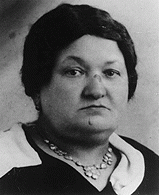
-
Zofia Yamaika
ID CardZofia was raised in a well-to-do, prominent Hasidic Jewish family in Warsaw. Uneasy with the constant tension between the Polish people and the Jewish minority, Zofia joined the communist student club Spartacus when she was a teenager. Spartacus actively campaigned against the growing fascist movement in Europe. 1933-39: When Warsaw surrendered to the Germans on September 28, 1939, Zofia was 14 years old. She stopped going to school. Though the Nazis banned Spartacus, she secretly helped to revive the…
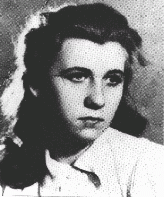
-
Boria Lerner
ID CardBoria was born to a Jewish family living in the Bessarabian province when it was still a part of the Russian Empire. Following Romania's 1918 annexation of the province, life for Bessarabia's 200,000 Jews worsened. Subject to more widespread antisemitic laws and pogroms than while under Tsarist Russian rule, many Bessarabian Jews emigrated overseas or sought refuge back in Soviet villages. 1933-39: Boria became active in a local revolutionary communist group and was arrested and jailed many times. After…

-
Rachela Rottenberg
ID CardThe younger of two children born to Jewish parents, Rachela grew up in Radom, an industrial town located some 60 miles south of Warsaw. One-quarter of the city's 100,000 prewar population was Jewish. Rachela's father was a Zionist and was active in municipal affairs. Her mother did volunteer work. l933-39: Germany invaded Poland on September 1, 1939. On September 5, with the Germans rapidly advancing, Rachela's family sought temporary safety with relatives in Warsaw. They got separated along the way.…

-
Maria Terez Halpert Katz
ID CardAlso known by her Yiddish name, Tobe, Terez was raised in a religious Jewish family. Her father and two brothers were rabbis. Though Terez was a promising student, she didn't pursue an advanced education because her traditional family wanted her to marry. So Terez married Menyhert Katz and moved to the town of Kisvarda [in Hungary]. There, she raised five daughters and one son; two other sons died. 1933-39: Terez's twin sons died when they were 8 months old, and she was convinced that their death was a…

-
Izabella Katz
ID CardIzabella was one of eight children raised in a religious Jewish family in the small town of Kisvarda in northeastern Hungary. Every Friday Izabella and her brother and four younger sisters went to the library to borrow the maximum number of books for their mother. Izabella attended public schools and longed to move to a big city. 1933-39: Antisemitism was prevalent. Izabella can't count the number of times she was called "smelly Jew." Her family cringed at "Heil Hitler" speeches from Germany on the radio…
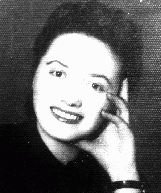
-
Elka Rosenstein
ID CardElka was raised in a large, Yiddish-speaking Jewish family in Sokolow Podlaski, a manufacturing town in central Poland with a large Jewish population of some 5,000. Elka was 14 when she graduated from middle school. After completing her schooling, she became a tailor. Working at home, she made clothes for different clothiers in town. 1933-39: Elka was unmarried and living with her parents when war between Germany and Poland broke out on September 1, 1939. German aircraft bombed Sokolow Podlaski's market…
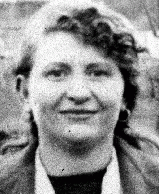
-
Fryda Litwak
ID CardFryda was one of five children born to religious Jewish parents in the industrial city of Lvov. She grew up in the same building as her paternal grandparents. Fryda attended public and private schools in Lvov, and grew up in a non-Jewish neighborhood, speaking Polish, German and Yiddish. 1933-39: When Fryda finished secondary school, she could not go to the university like her older siblings because Polish universities had instituted discriminatory quotas for Jews. In September 1939 the Germans invaded…

-
Thomas Elek
ID CardThomas was born to a Jewish family who moved to Paris when he was 6. His father's outspoken criticism of the fascist government and his affiliation with the Hungarian Communist Party led to the family's expulsion from Hungary in 1930. With the help of his father, a professor of modern languages, Thomas quickly learned French and excelled in school. He had a special interest in poetry and music. 1933-39: Thomas's father often argued against fascism, and he was greatly disturbed when Hitler became the…
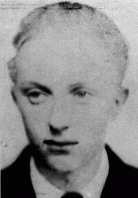
-
Sarah Rivka Felman
ID CardOne of seven children, Sarah was raised in a Yiddish-speaking, religious Jewish home in Sokolow Podlaski, a manufacturing town in central Poland with a large Jewish population of some 5,000. Sarah's parents ran a grain business. In 1930, Sarah began attending public elementary school in Sokolow Podlaski. 1933-39: After graduating from middle school in 1937 at the age of 14, Sarah helped out her now widowed mother in the family's grain business. Two years later, Germany attacked Poland. German aircraft…
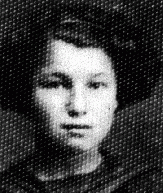
-
Chinka Schwarzbard Felman
ID CardOne of six children, Chinka was raised in a Yiddish-speaking, religious Jewish family in the town of Ostrow Mazowiecka, where her father was a wine maker. In 1910 she married Ephraim Isaac Felman, and a few years later the couple moved to Sokolow Podlaski, where Chinka helped her husband run a grain business. The Felmans had seven children, two of whom died in infancy. 1933-39: Chinka's husband died in 1935, and she took over the grain business with the help of her children. That same year, her oldest…

-
Fischel Felman
ID CardFischel was the oldest of seven children in a Yiddish-speaking, religious Jewish family. When he was a small child, his parents moved the family to Sokolow Podlaski, a manufacturing town in central Poland with a large Jewish population of about 5,000. Fischel was sent to study at a religious school. In 1932, when he was 21 years old, Fischel was inducted into the Polish army. 1933-39: After two years in the Polish cavalry, Fischel returned to Sokolow Podlaski, where he apprenticed to become a carpenter…
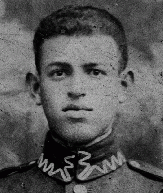
-
Moishe Felman
ID CardThe youngest of seven children, Moishe was raised in a Yiddish-speaking, religious Jewish home in Sokolow Podlaski, a manufacturing town in central Poland with a large Jewish population of some 5,000. Moishe's parents ran a grain business. Moishe attended a Jewish school and began public school in Sokolow Podlaski in 1933. 1933-39: Summer vacation had just finished and 13-year-old Moishe was about to begin another year at elementary school when the Germans invaded Poland on September 1, 1939. German…

-
Shmuel David Bursztyn
ID CardRaised by Yiddish-speaking, religious Jewish parents in the town of Pultusk in central Poland, Shmuel married in the late 1890s and moved with his wife, Gisha, to the city of Warsaw. Shmuel owned and operated a bakery on Zamenhofa Street. In 1920 the Bursztyns and their eight children moved to larger quarters in a two-bedroom apartment at 47 Mila Street in the Jewish section of the city. 1933-39: By 1939 six of Shmuel's children were grown and on their own. Only his youngest son and daughter still lived…
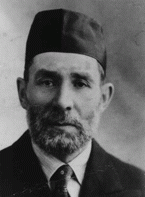
-
Hildegard (Hilda) Krakauerova Nitschkeova
ID CardHilda was the youngest of six children born to Jewish parents in a small Moravian town, where her father ran a dry-goods and clothing store. Her family spoke both Czech and German at home. Hilda was a tomboy when she was growing up, and competed on the Maccabi swim team. She attended a public secondary school in Hodinin, and wanted to pursue a career as a dental technician. 1933-39: In February 1933 Hilda moved to the Moravian capital of Brno where she attended dental school. On December 23, 1935, she…
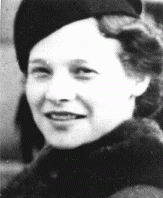
-
Judith Schwed
ID CardJudith was the older of two children born to Jewish parents in the town of Kiskunfelegyhaza in southeastern Hungary. Her mother, Anna, and her mother's sister, Kornelia, were close in age and had a contest to see who would be the first to have a baby. Judith's Aunt Kornelia won the contest and cousin Maria was born in December 1931, just three weeks before Judith. 1933-39: Judith's father had a prosperous wholesale business that sold goose meat, down, feathers and quilts. In 1939, the same year that…
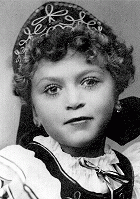
-
Erika Eckstut
ArticleExplore Erika Eckstut's biography and learn about the difficulties and dangers she faced in the Czernowitz ghetto.
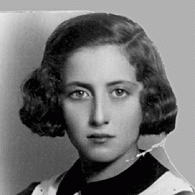
-
Susan Bluman describes the German invasion of Poland
Oral HistorySusan was 19 years old when Germany invaded Poland in September 1939. Her boyfriend, Nathan, was in Lvov when the Soviet Union occupied eastern Poland. Nathan sent a guide to Warsaw to bring Susan to the Soviet zone of occupied Poland. Her parents reluctantly agreed after Susan promised to return to Warsaw within two weeks. Upon her arrival in Lvov, Susan married Nathan. The couple then fled across the Lithuanian border to Vilna, where they stayed for a year. They received a visa for transit through Japan…
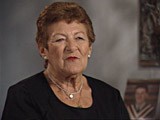
-
Robert Mills Donihi describes defendants at the postwar US trials in Germany
Oral HistoryIn 1945, Robert Mills Donihi was practicing law in Nashville, Tennessee. He accepted a government assignment to Tokyo where he worked on the trial of 28 high-ranking Japanese officers. After a year, he left for Germany, and arrived in Nuremberg in January 1947. Donihi was a member of the legal team at the postwar US trials in Germany, serving as both an interrogator and a prosecutor.
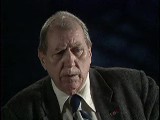
-
Robert Mills Donihi describes witnesses at the postwar US trials in Germany
Oral HistoryIn 1945, Robert Mills Donihi was practicing law in Nashville, Tennessee. He accepted a government assignment to Tokyo where he worked on the trial of 28 high-ranking Japanese officers. After a year, he left for Germany, and arrived in Nuremberg in January 1947. Donihi was a member of the legal team at the postwar US trials in Germany, serving as both an interrogator and a prosecutor.

-
Franz Wohlfahrt describes the trial and sentencing of his father
Oral HistoryFranz and his family were Jehovah's Witnesses. Germany annexed Austria in 1938. After World War II began, Franz's father was executed because, as a Witness, he opposed war. In 1940, Franz refused to participate in military training and would not salute the Nazi flag. He was imprisoned, interrogated by the Gestapo (German Secret State Police) in Graz, and sentenced to five years of hard labor in a camp in Germany. Franz was liberated by US forces in 1945.
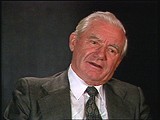
-
Agnes Allison describes the Hitler Youth movement at her school
Oral HistoryAgnes Allison (née Agnes Suzannah Halàsz) was born on October 28, 1926, in Budapest, Hungary, to Ilona Gero and Robert Halász. She had a younger sister, Judy. Agnes attended a private German school established for the children of diplomats. There was a Hitler Youth movement at the school. Agnes and her family were forced out of their home following the German occupation of Hungary. She went into hiding in December 1944. Beginning in 1933, the Hitler Youth and the League of German Girls had an…
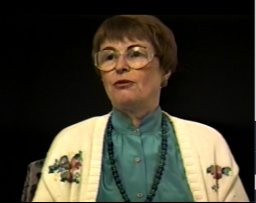
-
Freemasonry under the Nazi Regime
ArticleNazi propaganda linked Jews and Freemasons and claimed there was a “Jewish-Masonic” conspiracy. Learn more about Freemasonry under the Nazi regime.
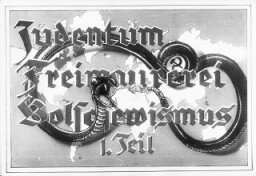
-
Hainewalde
ArticleThe SA established a protective custody camp at Hainewalde in March 1933. Well-known journalist and writer Axel Eggebrecht was among its early prisoners.
-
Treblinka: Key Dates
ArticleExplore a timeline of key events during the history of the Treblinka killing center in German-occupied Poland.

